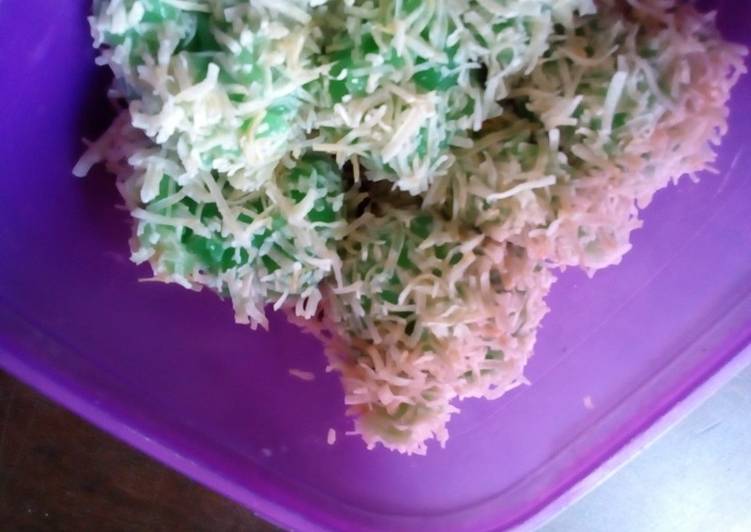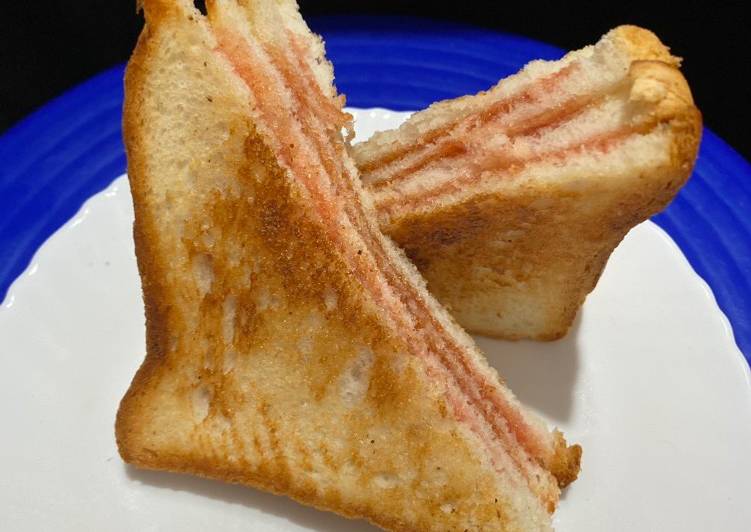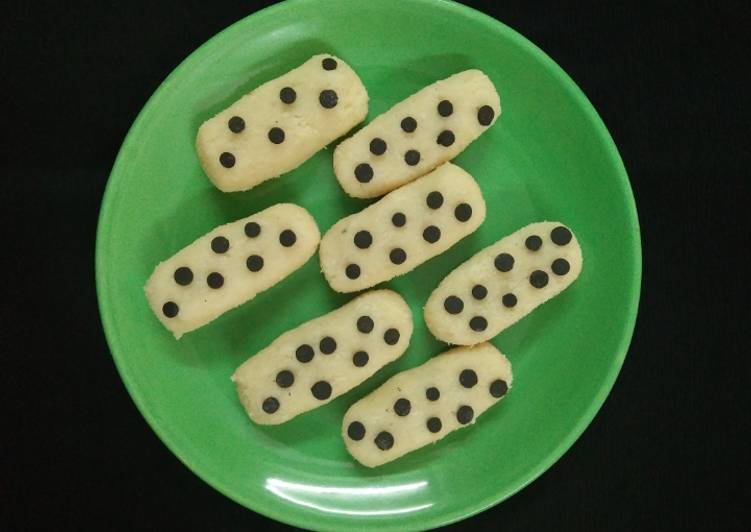
Hello everybody, it is Louise, welcome to my recipe site. Today, I will show you a way to prepare a special dish, klepon (glutinous rice balls with palm sugar filling). It is one of my favorites. This time, I am going to make it a bit unique. This is gonna smell and look delicious.
When mixing glutinous flour and water together, pour in water bit by bit while mixing until get the right consistency. Klepon (pronounced Klē-pon), or kelepon, is a traditional Southeast Asian green-coloured balls of rice cake filled with liquid palm sugar and coated in grated coconut, originating from Indonesia. The sweet glutinous rice balls is one of popular Indonesian kue, and it is commonly found in Indonesia. Then little balls are made and stuffed with chopped palm sugar.
Klepon (glutinous rice balls with palm sugar filling) is one of the most favored of current trending meals in the world. It is enjoyed by millions daily. It’s easy, it’s fast, it tastes yummy. Klepon (glutinous rice balls with palm sugar filling) is something that I’ve loved my whole life. They are nice and they look wonderful.
To begin with this particular recipe, we have to prepare a few components. You can cook klepon (glutinous rice balls with palm sugar filling) using 10 ingredients and 5 steps. Here is how you cook it.
The ingredients needed to make Klepon (glutinous rice balls with palm sugar filling):
- Get 250 g glutinous rice flour
- Make ready 200 ml water for klepon (warm)
- Prepare Green colouring, better if it's from suji or pandan
- Get Water for boiling
- Get 50 g palm sugar or jaggery, grated
- Prepare 1/2 teaspoon salt
- Prepare 1/2 teaspoon baking powder
- Get Coconut coating
- Prepare 100 g dessicated coconut
- Get 1/4 teaspoon salt
The small pieces of palm sugar initially are hard when inserted into glutinous rice dough and rolled into balls. The balls then are boiled, subsequently One must be careful when consuming a klepon. Besides the possibility that the bite could squirt and eject liquid palm sugar, a freshly boiled one. PagesOtherBrandKitchen/CookingThe Grand SpatulaVideosKlepon (Indonesian Sweet Glutinous Rice Balls) Full Recipe These Indonesian rice balls are prepared with glutinous rice flour shell that is wrapped around a palm sugar filling.
Instructions to make Klepon (glutinous rice balls with palm sugar filling):
- Boil the 200ml water until its warm (can be boiling but wait until it warms first). Put the green colouring.
- Pour them little by little to the flour that has been mixed with baking powder and salt until you can make a ball with them, then stop even if there are leftover water. If it's too liquidy you can add more flour.
- Grate the sugar. Put about half a tablespoon of sugar on a palm-sized flattened batter. Roll them into balls. This should make between 12-18 balls.
- Boil your klepon until they float, then roll into the dessicated coconut so that they don't stick onto each other.
- Enjoy for warm filling, or wait until they cool enough.
Besides the possibility that the bite could squirt and eject liquid palm sugar, a freshly boiled one. PagesOtherBrandKitchen/CookingThe Grand SpatulaVideosKlepon (Indonesian Sweet Glutinous Rice Balls) Full Recipe These Indonesian rice balls are prepared with glutinous rice flour shell that is wrapped around a palm sugar filling. The origin of klepon is typically associated with Java, while the same treat is better known as onde-onde or buah melaka in some parts of Sulawesi, Sumatra, and Malaysia. Javanese traditional snack with palm sugar filling. Onde-onde, ondeh-ondeh or in Indonesia - klepon is a dessert or tea-time snack made out of glutinous rice flour or sweet potato, filled with gula melaka (coconut palm sugar) and coated with grated coconut.
So that’s going to wrap this up for this exceptional food klepon (glutinous rice balls with palm sugar filling) recipe. Thank you very much for your time. I’m confident you will make this at home. There is gonna be interesting food at home recipes coming up. Remember to bookmark this page in your browser, and share it to your family, friends and colleague. Thanks again for reading. Go on get cooking!

